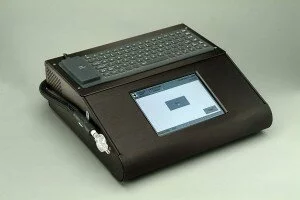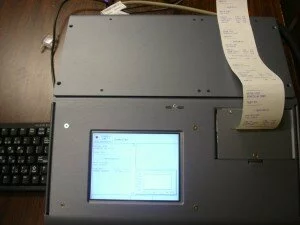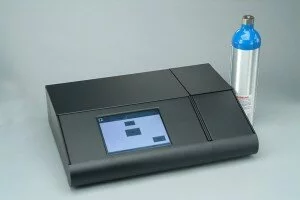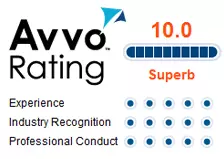
DataMaster DMT
There has been some previous discussion on these pages about DataMaster’s new breath testing machine known as the DataMaster DMT. None of this information is particularly useful in the defense of drinking drivers so I thought it a good idea to provide readers with some comprehensive information about this device as it is about to go into service in Michigan in July 2009.

DMT Prototype 2005
I first learned about the DMT in 2005 when I attended the NPAS (National Patent Analytic Systems) DataMaster breath test certification course in Mansfield Ohio. I attended this certification course shortly after NPAS began marketing this new device, and I was able to snap several photographs of the then current prototype, one of which is reproduced here.
The new DMT, which is an updated version of previous versions, contains a variety of new features and updates. As you can see from the photographs of the production DMT (copied here from the NPAS web site) the DMT has a very large display screen. Displayed on this screen is a window’s based user interface. This new interface greatly improves the usability of the device. It also increases the DMT’s functionality.
The new DMT contains a serial (RS-232) port to allow communication with a digital simulator. NPAS uses a single point factory calibration for the DMT. Wet bath external simulation is standard. There is also the option of dry-gas with automatic barometric pressure compensation.
As with all DataMasters, each state is free to request its own specifications. The unit being tested in MI is modeled along Michigan’s original DataMaster but the specifications have not been finalized yet.
At this time it appears that the State Police will order Michigan’s DMTs with the dry gas feature, meaning that the weekly calibration checks required by Michigan’s administrative rules will be accomplished useing a dry gas standard. Alternatively, the DMT can be programmed to perform calibration checks between subject samples, and this might eliminate the need for weekly calibration checks. However, it appears that wet bath simulation will be retained for the 120 day certifications – at least. If this hold true when the State Police place their final order then the weekly wet bath simulations will be a thing of the past.
Regarding the data storage capability mentioned above, the State Police do not have the staff or the funding to put together a database program and until they do I would not look for much of a difference in the way they handle the test records or test so it is not likely that they will order DMT’s with full data keeping functionality.
Also apparent from the photographs is the new black powder-coated case. Although NPAS claims that the new case makes it nearly immune to RFI problems that may occur with field use, they nevertheless choose to integrate an RFI antenea into the breath tube rather than add more screws because such screws would have been cosmetically undesirabale. NPAS believes that this antenea completely eliminates RFI interference. Consequently, the DMT can be ordered with a power source that allows transport in an automobile for immediate roadside breath testing.
With the DMT data entry is by means of a standard USB keyboard rather than an integrated keyboard. With the DMT-G (pictured above) a flexable USB keyboard is visibly situated on top. Although it appears that this keyboard is integrated with the unit, it is actually quite separate from it.
Another difference from the DataMasters currently in use in Michigan is that the new DMT does not contain an internal printer. Like your standard desktop computer, the DMT communciates with an “outside” printer via a USB port. If the user supplies a color printer, then the DMT can support color printing. Michigan will not be adopting this color printing option and instead will be using a black and white laser printer.
The DMT comes standard with three optical filters. Again, I do not know if Michigan will order or use all three filters. The DataMasters currently in use in Michigan have a three filter option, but Michigan’s DataMasters all have just two filters. In part this is due to the fact that when the DataMasters were originally ordered in 1993 the 3 filter option was not available. NPAS did not develop the 3 filter option until 1995 when it was requested in Great Britian.
The three optical filters are 3.44, 3.37 and 3.50 microns. This three-filter system is an attempt to only allow the passage of a limited frequency range of infrared energy thereby increasing the unit’s overall specificity to ethanol. These filters are also used in effort to exclude other alcohols and interfering compounds. Michigan’s DataMasters have excluded the 3.5 micron filter.
There is no doubt that the new DMT is a big improvement over the DataMasters currently used to test the breath of Michigan drivers arrested for drunk driving. These improvements are almost exclusively to the electronic functionality of the device. The hard science at work, infrared spectroscopy, has not been changed in any way.
However, one real change to the technology is the method of filter placement, which with the DMT is much more precise than it is with Michigan’s current DataMasters. The numbers are therefore much tighter in terms of precision and specificity. Whereas the DataMaster’s currently in use could be set at a .007 and not flag false interferents, the DMT can go down to a .004. Repeatability can be as low as .0005.
Another area where the DMT is significantly different is the use of a mass flow detector to measure air flow. It is much more precise and can also sense direction if the person decides to suck instead of blow. It also allows for a reliable calculation of the volume of air delivered
In my opinion this means that nearly all of the defenses previously available in a Michigan drunk driving breath case be available with the new DMT. . For example, the method of slope detection has not changed, so GERDS is still a potential problem. It will also be much more difficult to raise a breathing pattern defense as questions of the cooperation of the subject will be readily resolved by viewing the display print out – assuming the Michigan State Police decide to show same during the test
As a category it will probably be a little bit more difficult to establish a problem with the simulator protocal as dry gas simulation removes the majority of possible human error.

Related posts:




{ 2 trackbacks }